#Global landscape
Text
Prospect of change
The prospect of change refers to the potential or likelihood of a future alteration, transformation, or shift in a particular situation, system, or context. Change is a fundamental aspect of life and affects various aspects of human existence, including personal lives, relationships, organizations, societies, and even the global landscape. It can occur in different forms, such as technological advancements, social and cultural shifts, political reforms, economic developments, and environmental transformations.
The prospect of change can evoke a wide range of emotions and reactions in individuals and communities. Some people may embrace change as an opportunity for growth, innovation, and improvement. They may see it as a chance to overcome challenges, explore new possibilities, and achieve greater success. Others may feel anxious or resistant to change, fearing the unknown, potential disruptions, or the loss of familiar routines or structures.
The prospect of change can be driven by various factors and catalysts. Technological advancements, for example, have been major drivers of change throughout history. Innovations in areas such as artificial intelligence, automation, biotechnology, renewable energy, and communication technologies continue to shape and redefine our societies and the way we live and work.
Social and cultural factors also contribute to the prospect of change. Evolving attitudes, values, and norms can lead to shifts in societal expectations and practices. Movements advocating for equality, diversity, and sustainability, for instance, have prompted changes in policies, laws, and social structures in many parts of the world.
Political and economic factors can also create the conditions for change. Political reforms, revolutions, or shifts in power dynamics can lead to significant transformations in governance, policies, and institutions. Economic factors, such as globalization, market fluctuations, or the emergence of new industries, can drive changes in employment patterns, wealth distribution, and consumer behaviors.
Environmental factors, including climate change, natural disasters, and resource depletion, are increasingly shaping the prospect of change. The need for sustainable practices, renewable energy sources, and climate mitigation and adaptation measures are driving transformative shifts in various sectors and industries.
It is important to note that the prospect of change is often accompanied by both opportunities and challenges. While change can bring about positive outcomes and advancements, it can also lead to uncertainty, disruptions, and inequalities. It requires individuals, organizations, and societies to adapt, be flexible, and proactively manage and navigate through the process of change.
Overall, the prospect of change is a constant presence in our lives. Recognizing and understanding its potential implications allows us to prepare, embrace opportunities, and navigate the challenges that arise as we move into the future.
#Change#Prospects#Transformation#Innovation#Technology#Social change#Cultural shift#Political reform#Economic development#Environmental transformation#Adaptation#Challenges#Opportunities#Future#Growth#Uncertainty#Flexibility#Sustainability#Global landscape#Evolution#deep thinking#today on tumblr#deep thoughts
2 notes
·
View notes
Text
"With “green corridors” that mimic the natural forest, the Colombian city is driving down temperatures — and could become five degrees cooler over the next few decades.
In the face of a rapidly heating planet, the City of Eternal Spring — nicknamed so thanks to its year-round temperate climate — has found a way to keep its cool.
Previously, Medellín had undergone years of rapid urban expansion, which led to a severe urban heat island effect — raising temperatures in the city to significantly higher than in the surrounding suburban and rural areas. Roads and other concrete infrastructure absorb and maintain the sun’s heat for much longer than green infrastructure.
“Medellín grew at the expense of green spaces and vegetation,” says Pilar Vargas, a forest engineer working for City Hall. “We built and built and built. There wasn’t a lot of thought about the impact on the climate. It became obvious that had to change.”
Efforts began in 2016 under Medellín’s then mayor, Federico Gutiérrez (who, after completing one term in 2019, was re-elected at the end of 2023). The city launched a new approach to its urban development — one that focused on people and plants.
The $16.3 million initiative led to the creation of 30 Green Corridors along the city’s roads and waterways, improving or producing more than 70 hectares of green space, which includes 20 kilometers of shaded routes with cycle lanes and pedestrian paths.
These plant and tree-filled spaces — which connect all sorts of green areas such as the curb strips, squares, parks, vertical gardens, sidewalks, and even some of the seven hills that surround the city — produce fresh, cooling air in the face of urban heat. The corridors are also designed to mimic a natural forest with levels of low, medium and high plants, including native and tropical plants, bamboo grasses and palm trees.
Heat-trapping infrastructure like metro stations and bridges has also been greened as part of the project and government buildings have been adorned with green roofs and vertical gardens to beat the heat. The first of those was installed at Medellín’s City Hall, where nearly 100,000 plants and 12 species span the 1,810 square meter surface.
“It’s like urban acupuncture,” says Paula Zapata, advisor for Medellín at C40 Cities, a global network of about 100 of the world’s leading mayors. “The city is making these small interventions that together act to make a big impact.”
At the launch of the project, 120,000 individual plants and 12,500 trees were added to roads and parks across the city. By 2021, the figure had reached 2.5 million plants and 880,000 trees. Each has been carefully chosen to maximize their impact.
“The technical team thought a lot about the species used. They selected endemic ones that have a functional use,” explains Zapata.
The 72 species of plants and trees selected provide food for wildlife, help biodiversity to spread and fight air pollution. A study, for example, identified Mangifera indica as the best among six plant species found in Medellín at absorbing PM2.5 pollution — particulate matter that can cause asthma, bronchitis and heart disease — and surviving in polluted areas due to its “biochemical and biological mechanisms.”
And the urban planting continues to this day.
The groundwork is carried out by 150 citizen-gardeners like Pineda, who come from disadvantaged and minority backgrounds, with the support of 15 specialized forest engineers. Pineda is now the leader of a team of seven other gardeners who attend to corridors all across the city, shifting depending on the current priorities...
“I’m completely in favor of the corridors,” says [Victoria Perez, another citizen-gardener], who grew up in a poor suburb in the city of 2.5 million people. “It really improves the quality of life here.”
Wilmar Jesus, a 48-year-old Afro-Colombian farmer on his first day of the job, is pleased about the project’s possibilities for his own future. “I want to learn more and become better,” he says. “This gives me the opportunity to advance myself.”
The project’s wider impacts are like a breath of fresh air. Medellín’s temperatures fell by 2°C in the first three years of the program, and officials expect a further decrease of 4 to 5C over the next few decades, even taking into account climate change. In turn, City Hall says this will minimize the need for energy-intensive air conditioning...
In addition, the project has had a significant impact on air pollution. Between 2016 and 2019, the level of PM2.5 fell significantly, and in turn the city’s morbidity rate from acute respiratory infections decreased from 159.8 to 95.3 per 1,000 people [Note: That means the city's rate of people getting sick with lung/throat/respiratory infections.]
There’s also been a 34.6 percent rise in cycling in the city, likely due to the new bike paths built for the project, and biodiversity studies show that wildlife is coming back — one sample of five Green Corridors identified 30 different species of butterfly.
Other cities are already taking note. Bogotá and Barranquilla have adopted similar plans, among other Colombian cities, and last year São Paulo, Brazil, the largest city in South America, began expanding its corridors after launching them in 2022.
“For sure, Green Corridors could work in many other places,” says Zapata."
-via Reasons to Be Cheerful, March 4, 2024
#colombia#brazil#urban#urban landscape#urban planning#cities#civil engineering#green architecture#green spaces#urban heat#urban heat island effect#weather#meteorology#global warming#climate change#climate hope#climate optimism#climate emergency#climate action#environment#environmental news#city architecture#bicycling#native plants#biodiversity#good news#hope#solarpunk#ecopunk#hopepunk
16K notes
·
View notes
Text

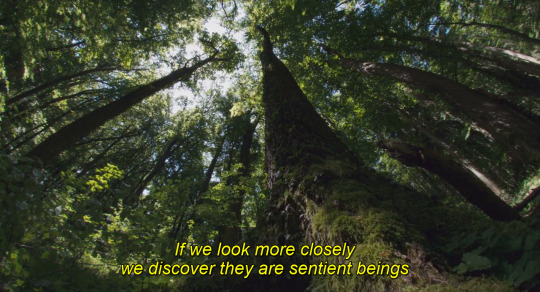
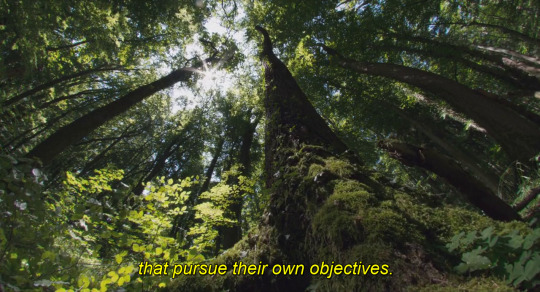
The Hidden Life of Trees, (2020)
#its a fascinating documentary i watched today and it was a good watch#movie scenes#good movie#movie quotes#movie stills#movie aesthetic#movie art#movies#documentary#trees and forests#trees#forest#climate change#climate crisis#global warming#green aesthetic#green#landscape#cinema#cinematography#nature#plants
2K notes
·
View notes
Text
I am not here to debate or discuss politics. Should any of you wish to go in that direction, I’m sorry, but you’re in the wrong place. The reason: global warming is not a debatable topic because debating will just continue to delay a very straightforward approach for solving an extremely obvious crisis...
211 notes
·
View notes
Text

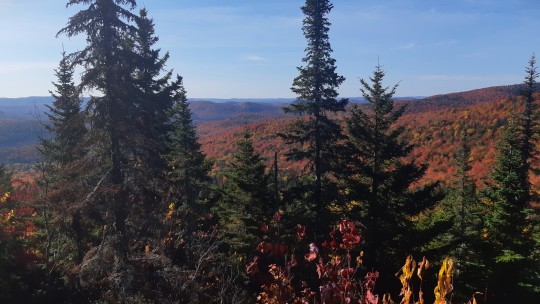
#RelocationTime
Mountainous Parts of the Northern Hemisphere.
#Relocation Time#GPS#Global Positioning System#Fall Season#Autumn#Color Splash#Nature Photography#Landscapes#Mountains View#Hiking Trails#Altitude Life#ECCC#Environment and Climate Change Canada#NCC#Nature Conservancy of Canada#Mountainous Parts of the Northern Hemisphere#Canada#The RavenKeeper
474 notes
·
View notes
Text

Burning.
#art#my art#artwork#concept art#artists on tumblr#illustration#paint#painting#draw#drawing#watercolor#watercolour#gouache#markers#landscape#ambient#wildfire#ecology#global warming
116 notes
·
View notes
Text

that’s just not what people are talking about when they say ‘nightmarish hellscape’ though is it
#it’s obvious they’re either talking about global capitalism or else maybe distance from the natural landscape / cycles#this is so deliberately obtuse lol#I’m done defending the liberals on here#it’s embarrassing#moth.txt
12 notes
·
View notes
Text
This is my warrior cats blog but it's also my general xenofiction blog, and I'm reading various middle grade - young adult xenofiction books that I either haven't read or read a long time ago and I just finished my reread of Wolves of the Beyond.
And there are a lot of elements I could talk about (I forgot just how bleak these books are) but instead I'm going to focus on one weird detail:
Were we supposed to know who Maud's father was?
Like they make a point to say her father must have had red fur, and maybe I just wasn't paying attention but I don't remember that many red wolves? I checked the wiki but they don't know either, and there aren't many other red wolves listed, and the red wolves (or reddish ones) that are there don't make much sense for Banja. There's a couple with unknown fur colors, but that's not satisfying.
I remember as a kid (and now during my reread) thinking Rags was going to be her father, but when he shows up they don't seem to know each other?
And it's possible it's not meant to be anything, or it was from a plotline that got scrapped. It's just the specific detail of her father must have been red because her fur is too red for him to have had any other fur color. That's just a weird amount of detail for it to be meaningless. Like calling out his fur color instead of just going oh I wonder who her dad was.
The timing was around the same time Rags was introduced, which makes me think he was supposed to be her father and it got scrapped at some point.
#wolves of the beyond#wolves of the beyond spoilers#these books really are bleak though I forgot about that#Kathryn Lasky really said hey what if I made a kids series depicting the brutality of a deeply ableist society living in a harsh landscape#full of starvation and natural disasters with no escape (unless you like canabalism) and also there's a death cult at one point :)#and my child brain went aww the woof and the bear love each other :)#but also during my reading I've read some of Lasky's other stuff and this is just her style. Animals going through bleak harsh times#The horse ones are set during the Spanish colonization of the Americas and includes the horrors of colonialism and animal abuse.#The owl ones include kidnapping brainwashing child labor child soldiers child abuse and owl nazis.#I haven't read the polar bear ones but I imagine it's probably about global warming and nuclear warfare or something.
7 notes
·
View notes
Text
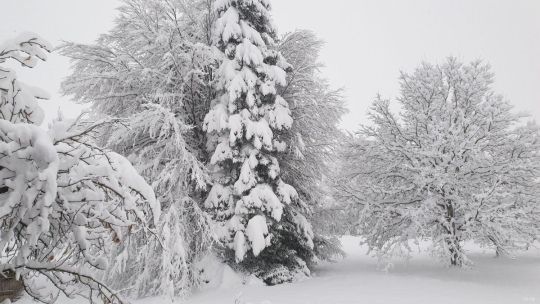
#Winter#Snow#7th December 2023#Global Warming?#Climate Change is a Hoax#Landscape#Sky over Germany#Weather in Germany#Home sweet Home
11 notes
·
View notes
Text

Snæfellsjökull, Iceland
This glacier in the west of Iceland was mentioned as early as 1864 by Jules Verne in his "Voyage au centre de la Terre". In the past 150 years, approximately half of the glacier has melted. Most of Snæfellsjökull is predicted to have melted by the year 2050. By the end of this century the glacier will be not be there anymore.
Taking up about 10 percent of Iceland, the glaciers are the origin of the name of the country itself. In the upcoming centuries, it is likely that most of Iceland's glaciers will have disappeared. If the global temperature increase remains beneath 2 degrees, Iceland's largest glacier, Vatnasjökull, could remain at 30 to 60 percent.
Today (30 November, 2023) begins UN's 28th climate conference, held in Dubai. Current global policies are estimated to lead to 3 degrees temperature increase this century.
What we do right now, today, is the ultimate determent of the future of our home. The last generation to grow up with Iceland's famous glaciers are growing up now.

[Okjökull lost its status as a glacier in 2014, declared a dead glacier.]
#cop28#iceland#climate change#global warming#climate emergency#climate crisis#landscape#landscape photography
7 notes
·
View notes
Text










Another brilliant Global Bird Fair and time at Rutland Water 12th-14th July 2024
We're just home from a long weekend in the East Midlands visiting this event we love and packing in some amazing wildlife encounters at the Rutland Water Nature Reserves along the way. The two days we spent at the fair were fulfilling as always, it was such a valuable chance to interact with people; we saw so many people we knew from different aspects of our bird/wildlife watching who were great to catch up with, and we enjoyed chatting to many new people too and meeting some of my wildlife idols again. We attended some inspiring talks, from seeing Nick Baker put invertebrates under the microscope on stage to a touching talk about loss of hearing and hearing impediments from David Lindo. Simon King and Mike Dilger were fascinating and thought-provoking to listen to as ever among others with a great return for the prestigious ‘Bird Brain of Britain’ quiz. Seeing the incredible work of the BTO at their legendary Bird Fair ringing demonstration was a pleasure again, whilst we were watching Green Woodpecker, Treecreeper, Goldcrest, Blackcap, Willow Warbler, Chiffchaff, Great Tit and Blue Tit were thrilling birds to see ringed. I always leave the Bird Fair inspired and feeling good.
Both on a look round Egleton Nature Reserve on Friday and at Lyndon Nature Reserve nearby to the fair visited at or after it over the weekend, we fitted in some amazing birdwatching. From start to finish we were mesmerised by the iconic Ospreys, such magnificent birds to marvel at one more this year. It was so peaceful watching them fish and special to see a youngster. It was a bird of prey fest with including Kestrel and Buzzard on the way and way back from the car eight different species seen on the trip; also including Red Kites another massive bird that we saw so much of, elegant Marsh Harrier, agile Hobby, Sparrowhawk and sensational evening moments as a magical Barn Owl quartered over Lyndon’s waterside meadows. I notched up a glee filling milestone when as hoped a sighting of my first Green Sandpiper of the year took my year list to 200, making it my joint third highest ever. What a moment for the year with a bird I have a big admiration for and a strong record for seeing at Rutland Water. Great White and Little Egrets, Grey Heron, Lapwings, Egyptian Geese, Tufted Duck, Teal, Lesser Black-backed Gull, Common Tern, Wren, Stock Doves, Sand Martins, Swifts, Whitethroat and Blackcap were other highlights.
There were also two astonishing moments seeing young birds of two of my favourite species as for the first time ever I saw Pochard ducklings and a juvenile Cuckoo. With the latter it was exhilarating and fascinating to witness the adult of its host species on this occasion, a Dunnock, feed the bird. A smashing glimpse into the life of this species, one of my wildlife moments of the year and ever.
As is often the case we had a fantastic weekend of mammals too, with a Water Vole seen swimming across a channel of water at Lyndon bringing me another milestone as my first of the year bringing my mammal year list beyond last years total to make it my highest ever. There was also a sensational moment as we saw two Stoats at Egleton, thrilling glimpses of this charismatic mammal. Rabbits were nice to see too. Getting into insects and I got some crucial dragonfly sightings of my year with my first Ruddy Darter and Four-spotted Chaser of the year as well as fine views of Southern Hawker, Common Blue Damselfly and Blue-tailed Damselfly. In the world of beetles it was great to see my first Black-and-yellow Longhorn beetle of the year at Lyndon and plenty of summer stalwarts Common Red Soldier beetles throughout the weekend and ladybirds. Bee, Sun Fly, spider including Harvestmen in a hide, midges and Golden Dung fly were other highlights.
Global Bird Fair coincides with the start of the Big Butterfly Count and Rutland Water especially a bit of rich and vibrant meadow at Egleton is a perfect place to do some counts. This weekend I saw some great species and pleasing amounts of individuals. Gatekeeper, Meadow Brown, a fair few Ringlets, Small White, Green-veined White, Comma and Small Tortoiseshell were great to count and away from the count Large and Small Skipper were good to see. I liked seeing Six-spot Burnet too and on the Butterfly Conservation stand at the Bird Fair seeing an Elephant Hawk-moth and others with a caterpillar too was great.
It was a floral fest with many species enjoyed, so much upright hedge-parsley, nettle-leaved bellflower, meadow crane’s-bill, pineappleweed, yellow rattle and herb-Robert were among the top sightings. Other plant highlights included sorrel, white and red clover, red campion, water lily, marsh woundwort, hedge woundwort, lady’s bedstraw, oxeye daisy, spear thistle, creeping thistle, common hedge-nettle, bush vetch, sow thistle and hawksbeard, white deadnettle, forget-me-not, meadowsweet, hairy St. John’s-wort, nightshade, bird’s-foot trefoil, viper’s-bugloss, yarrow, hogweed and rowan berries. As ever I was taken in by the vast water and wetland views of Rutland Water, it is stunning, with wooded areas, meadows, views to the focal point in the landscape Burley-on-the-Hill and some dramatic and pretty sky scenes. A key weekend of my year once more, a fantastic time which I enjoyed so much.
I took the ten photos in this set of; the young Cuckoo, view at Lyndon, upright hedge-parsley at Egleton, Common Blue Damselflies mating and the Stoats there, Osprey on the nest at Lyndon, view in the vast Rutland Water at Egleton, Green Sandpiper, Lapwings and Greylag Geese at Lyndon and Gatekeeper and knapweed at Egleton.
#photography#birdwatching#osprey#hobby#cuckoo#marsh harrier#upright hedge-parsley#bellflower#herb-Robert#white clover#red admiral#nettle-leaved bellflower#ringlet#common blue damselfly#ruddy darter#common red soldier beetle#black-and-yellow longhorn beetle#landscape#views#rutland#rutland water#global bird fair#2024#july#summer#europe#england#uk
3 notes
·
View notes
Text
"A recent World Meteorological Organization report called heat waves the “deadliest meteorological hazard” from 2015 to 2019, affecting people living on all continents, and setting new national heat records in many regions.
Canada’s top weather event in 2021 was British Columbia’s record-breaking heat, according to Environment and Climate Change Canada. The temperature in Lytton, B.C., hit 49.6 C on June 29. The following day a wildfire destroyed 90 per cent of the town, killing two people and displacing 1,200 others.
Heat waves also exacerbate existing health issues, including cardiovascular and respiratory disease. They’re associated with increased hospital admissions, psychological stress and aggressive behavior, as well as excess mortality.
During heat waves, the highest temperatures are often found in urbanized areas. Urbanization is almost always associated with an increase in paved, impervious areas, and often a decrease in greenery. Concrete and asphalt roads, and other built materials readily absorb, store and release heat, raising city temperatures, a phenomenon called the urban heat island.
Many studies have shown that urban forests can reduce the urban heat island, and many policies focus their attention on large green spaces.
Small green spaces, such as yards, rooftops and small parcels of undeveloped land, can make impressive contributions to lowering urban heat, but they are often overlooked when developing strategies for urban cooling.
The effect of small green spaces
Cities rarely have the opportunity to add large green spaces to help counter the effects of heatwaves. Smaller vegetated spaces, however, can still meaningfully decrease local land temperatures.
Small green spaces, such as yards, rooftops and small parcels of undeveloped land, can make impressive contributions to lowering urban heat, but they are often overlooked when developing strategies for urban cooling.
A recent study in Adelaide, Australia, found that tree canopy cover and, to a lesser extent, grass cover decreased local daytime surface temperatures by up to 6 C during extreme summer heat conditions. Further inland, suburban yards and gardens can decrease local surface temperatures up to 5 C.
At a quite small scale, on the order of tens of square metres, trees reduced daytime surface temperatures twice as much as grass cover. But grass and other small, low-lying plants, grow relatively quickly, compared to trees.
Cities should adopt short-term and long-term strategies to respond to extreme heat, including the replacement of paved and impervious surfaces with grasses and turf, and increasing tree plantings to boost canopy coverage.
Amplifying the cooling effect
Furthermore, when managing small green spaces, city planners and foresters can select tree species based on their ability to cool the environment. Green spaces with a high diversity of tree species have a greater cooling effect in spring, summer and fall. They also have a larger maximum drop in temperature in the summer, compared to spaces that are less diverse.
For example, tree canopies with large leaves and high transpiration rates — the evaporation of water from plants occurring at the leaves — could provide more cooling.
Planting a variety of species, of different heights, can have a larger cooling effect than tall trees alone.
The structure of green space may also influence its cooling efficiency. In summer, a plant community with multiple layers of trees, shrubs and herbs can further decrease air temperature by 1 C on a sunny day and 0.5 C on a cloudy day, compared with an area only dominated by tall trees...
But overall, trees usually have a stronger effect on cooling than grass. Planting trees in groups, not individually or in lines, is recommended for regulating the microclimate (local climate conditions near the Earth’s surface).
Small green spaces can offer a lot of summer cooling in cities. And cities can learn to manage the configuration of small green spaces better to get more cooling benefits and minimize the trade-offs."
-via GoodGoodGood, July 4, 2024
#green space#urban#urban landscape#urban forest#urban green spaces#food forest#permaculture#gardening#microclimate#cooling#conversation#global warming#climate change#climate action#solarpunk#rooftop garden#ecopunk#meterology#ecology#ecosystems#environmental science#plant trees#good news#hope
686 notes
·
View notes
Text
There are two climate change characteristics that best portray a fixed light brown sky in the distant future. One - Ice in the form of mountain glaciers, the Arctic and Antarctica will require an Ice Age to build back up, and the last such age ended about 10,000 years ago. The next one is thought to be 50,000 years away. Yes, the ice melt began thousands of years ago, but humans have accelerated a slow process into a rapid one; thereby bringing the final melt hundreds of years sooner than originally scheduled by Mother nature. And two - Ocean acidity and saltwater rise that worsen with each annual dosage of 40 billion tons of fossil fuel pollutants infiltrating our atmosphere and waterways. I’m sorry to inform you that irrevocable sea level rise is here to stay and this permanent global warming penalty has three origins that I’m afraid will never die off for a very, very long time unless human caused climate warming ceases real soon. Atmospheric warming causes the sea water to expand. . .upwards. Then there is the obvious rise due to the fast melting of all land ice. In addition, coastal communities are over-demanding regional groundwater supplies for domestic purposes and agriculture use. As the groundwater runs low, the surrounding land sinks, thus forcing nearby ocean waters closer in away from the former shoreline....
#climate change#hope#government#global warming#inspiration#philanthropy#landscape#climate crisis#democrat#republican
111 notes
·
View notes
Text
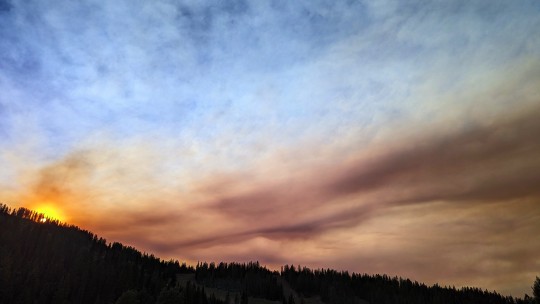
Wildfire Smoke Over Lookout Pass, Idaho. August 18, 2023.
#wildfires#global climate change#global climate crisis#idaho#my photo#woodsfae#photography#landscape photography#fires#natural disaster#forest fires#sunset#mountains#evening#sky
9 notes
·
View notes
Text
#At Refrigerant Center INC#we specialize in providing comprehensive refrigerant solutions tailored to meet the diverse needs of our clients. With a deep understanding#Ventilation#and Air Conditioning) industry and its evolving regulatory landscape#we are committed to offering environmentally responsible refrigerant products and services.#Our company prides itself on being a trusted partner for businesses operating in various sectors#including commercial#industrial#and residential. Whether you're a facility manager#HVAC contractor#or equipment manufacturer#we have the expertise and resources to fulfill your refrigerant requirements efficiently and affordably.#Key Services and Products:#Refrigerant Sales: We offer a wide range of refrigerant products#including traditional HFCs (Hydrofluorocarbons)#low-GWP (Global Warming Potential) alternatives like HFOs (Hydrofluoroolefins)#and natural refrigerants such as CO2 and ammonia. Our extensive inventory ensures that clients can find the right refrigerant for their spe#Refrigerant Reclamation: Recognizing the importance of sustainability#we provide refrigerant reclamation services aimed at recovering#purifying#and reprocessing used refrigerants. Through our state-of-the-art reclamation facilities#we help clients minimize environmental impact while maximizing cost savings.#Regulatory Compliance Assistance: Navigating the complex regulatory landscape surrounding refrigerants can be challenging. Our team stays u#national#and international regulations#including EPA (Environmental Protection Agency) regulations in the United States.#Technical Support: We understand that proper handling and usage of refrigerants are critical for the safety and efficiency of HVAC systems.#training#and educational resources to assist clients in handling refrigerants safely and effectively.#Customized Solutions: Every client has unique requirements
3 notes
·
View notes
Text
finding any info on what countries are right wing are terrible because every english article will tell you afghanistan, china, and the dprk no matter what despite global north countries propelling fascism everyday like all of central and eastern europe being relics of nazism, and s korea having right wing insurgency from christians and incel misogynists, and japan proudly being spotted with the imperial flag in positive military relation w canada... also notorious for genocide but w free healthcare...
8 notes
·
View notes